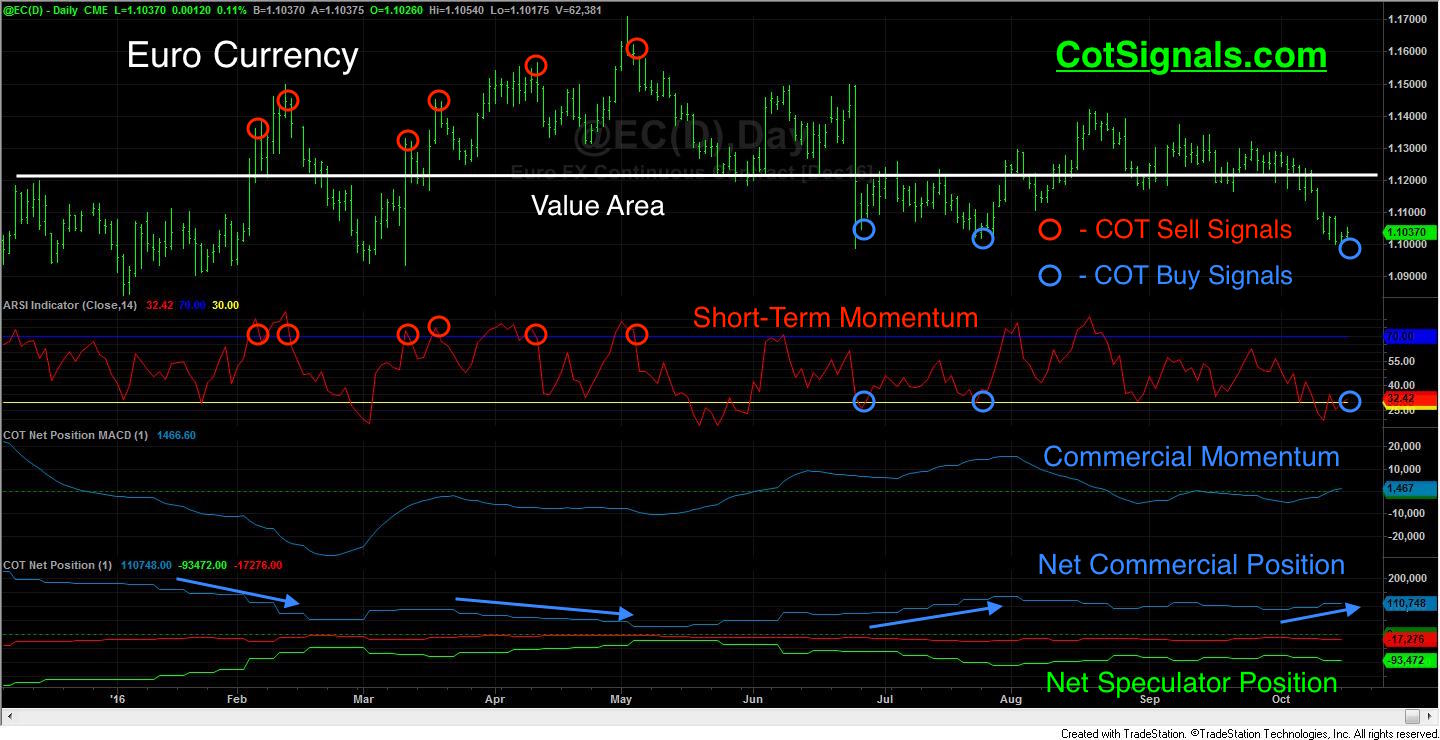There are several types of trading, each with their pros and cons. The key is developing a consistent set of indicators in line with the trading style to be employed. Today, we'll look at a premise based, mean reversion strategy utilizing the Commitments of Traders (COT) reports and the actions of the commercial traders in the Euro FX.
Our approach rests on the premise that the commercial traders' actions, as reported in the Commodity Futures Trading Commission's (CFTC) weekly COT report reflect the fundamental supply and demand of a given market. The commercial traders' actions focus solely on the market affecting their business model. As such, their analysis of the markets their livelihoods and the livelihoods of their employees are based on is critical. Furthermore, because their actions are based on capturing the difference between the futures' market prices and their businesses' needs they are attempting to lock in alpha through the active hedging of their supply and demand needs. Thus, as prices move beyond their assessment of the value area, long hedgers are brought to the market as it falls just as short hedgers are brought to the market by rallies beyond their calculated value areas. The farther the market moves beyond the commercial traders' collective sense of value, the more hedging pressure will be brought to the market until the industrial needs of the hedgers have been met. In normal market conditions, it is precisely this type of buying and selling pressure from the commercial hedgers that provides the market's general ebbs and flows.
This brings us to the Euro FX chart, below. Clearly, there has been little direction over the last year in the Euro currency. The euro spent the first part of the year above $1.12 and the last few months below this level. Notice the symmetry between the sell signals in the first half of the year as the Euro traded above $1.12 and up to $1.17 through the May high as compared to the buy signals we've begun to see since the Brexit vote dropped it below the year's value area. This is an excellent depiction of the actions of the commercial traders on a macro basis. Commercial traders reached their most bearish position of the year one week after the May high. Conversely, they reached their most bullish position of the year about two weeks after the Brexit fallout. Obviously, they were right on both sides.
This is why we use them as our backstop. Swing trading or, mean reversion is all about identifying the turning points for entering a market and not overstaying your welcome when it's time to take profits. We published a Discretionary COT Buy Signal in our nightly email last night, and we see this as just such a trade. The market has traded down to support and created an oversold situation on our proprietary short-term momentum indicator. This oversold situation arises in conjunction with positive commercial trader momentum. Their positive momentum indicates their buying and puts us on the look out for long entries. Yesterday's bounce triggered the buy signal and provided us with the swing low price of $1.0992 at which, we will place a protective sell stop. Finally, we'll look for profits above $1.11 on its way towards the value area around $1.12.







